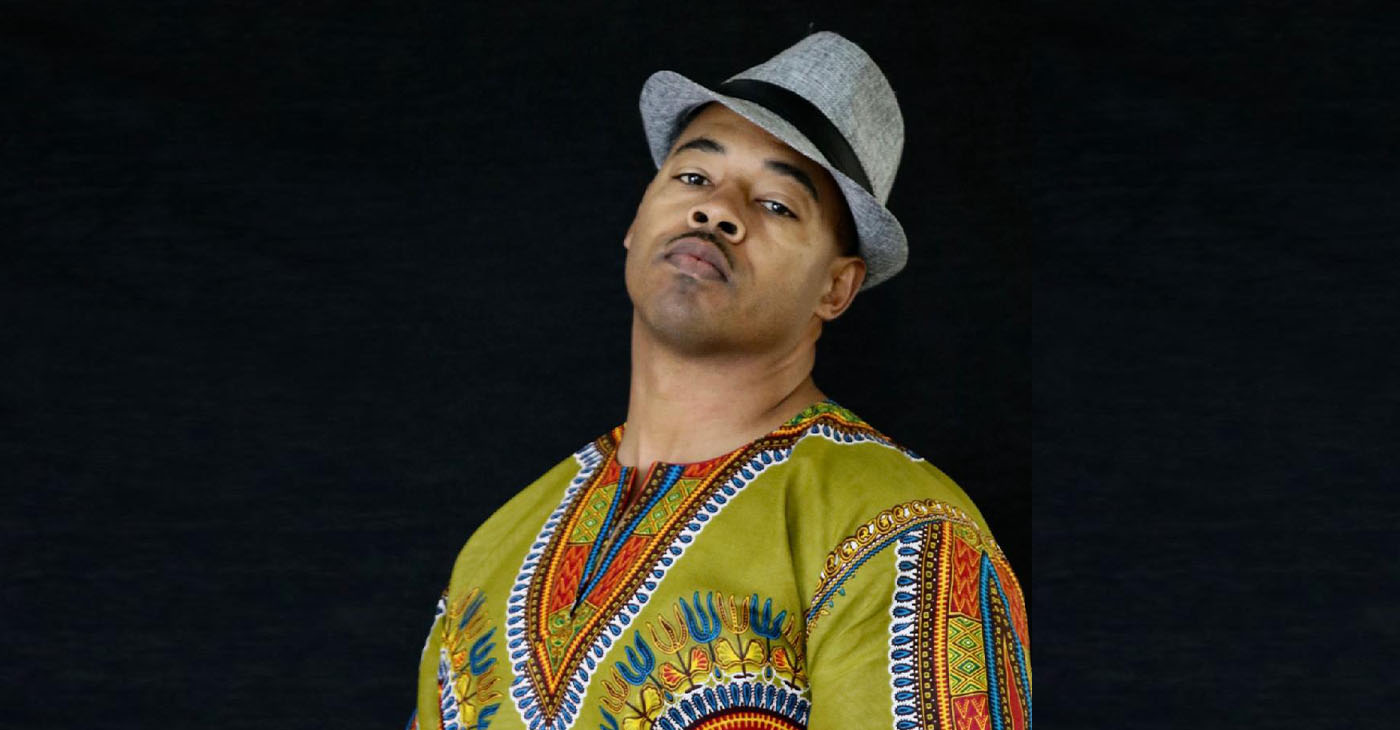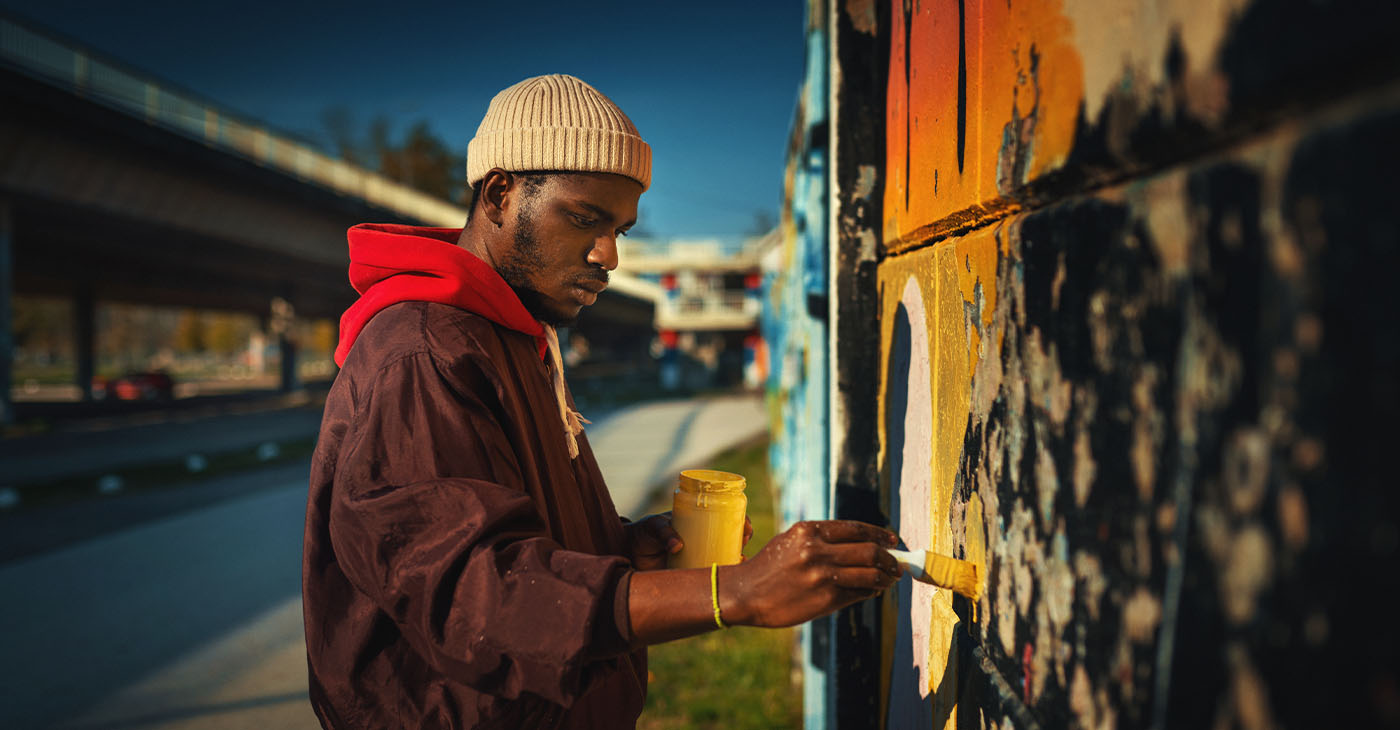Art
More young people reading, buying poetry
FLORIDA COURIER — People are clicking on poetry on Twitter.
By Jenna Ross
ST. PAUL, Minn. – People are clicking on poetry on Twitter. They’re listening to poems on podcasts. They’re buying poetry collections on Amazon.
But on a recent Monday night in St. Paul, they were hearing poetry in person. A diverse, mostly 20-something crowd snapped and purred as friends and strangers read their verses from Park Square Theatre’s lower stage during Button Poetry’s monthly slam poetry competition.
Many were drawn by YouTube. (Button’s YouTube channel boasts more than a million followers.) By Instagram. By the changing world of poetry.
“We’re seeing astronomical growth,” said Sam Van Cook, who founded Button, a Minneapolis-based company that straddles poetry’s in-person and online worlds. “Friends who work in book sales … we joke that for the first time in any of our lives, poetry is a growth industry.”
National bump
More people — especially young people — are reading and buying poetry. About 12 percent of adults read poetry in the past year, a bump of 5 percentage points over 2012 and a 15-year high, according to a new survey by the National Endowment for the Arts.
Sales of poetry books have swelled over that time, according to NPD BookScan, which tracks book sales in the U.S., “making it one of the fastest growing categories in publishing.”
Social media are driving the trend. Among the top 20 bestselling poetry authors in 2017 were a dozen so-called “Instapoets,” who attract readers by sharing short, photogenic verse on Instagram and Twitter.
Their queen is Rupi Kaur, an Indian-born Canadian poet who boasts 3.4 million Instagram followers, sells out theaters and claps back at her detractors.
New, ‘b-side poems’
But poets published by traditional presses and praised by critics use those platforms too, sharing one another’s work and changing the notion of a poet as an old White dude.
Minnesotans Danez Smith and Hieu Minh Nguyen are among those sharing new and “b-side” poems on Twitter, letting their thousands of followers in on whom they’re crushing on, poetry-wise and otherwise.
“There’s a myth around who a poet can be — or who can be a poet,” Nguyen said by phone. “People are seeing that those archetypes, those barriers, aren’t true.”
More diverse
As the slate of bards becomes more diverse, so do their audiences. Some of the biggest gains in that NEA Survey of Public Participation in the Arts, released last year, came from people of color. About 15 percent of African-Americans reported reading poetry, up from 7 percent in 2012.
Some 13 percent of AsianAmericans had read poetry in the past year, compared with 5 percent in 2012.
Minnesota-based Vietnamese-American poet Bao Phi compared it to the shift in Hollywood, where “we’ve seen that representation can actually pay out huge dividends.”
Spoken word success
For decades, many marginalized people have hustled to diversify the slate of poets performing and publishing, especially by connecting with students and young people, said Phi, who crafted his reputation as a spoken word artist in the 1990s.
Performance-based poetry finally shed some of the scene’s chauvinism. Spoken word artists broke through the glass ceiling of publishing. (Phi didn’t publish his first poetry collection, “Sông I Sing,” until 2011.)
“This didn’t happen overnight,” Phi said. “All that work adds up to what we’re seeing now.”
‘Political poetry’ hot
Erika Stevens, poetry editor at large for the Minneapolis-based nonprofit Coffee House Press, pointed to “Indecency,” by Justin Phillip Reed, which tackles White supremacy with intimate, sometimes confrontational poems.
Last year, that collection, published by Coffee House, won the National Book Award in poetry, showing “how far the institutions have come in terms of what they recognize as innovative and groundbreaking and worthy of award attention,” Stevens said.
U.S. poet laureate Tracy K. Smith recently wrote in the New York Times about why “political poetry is hot again,” arguing that poetry “has become a means of owning up to the complexity of our problems.”
Reaching women
Poets and readers have debated the success of Kaur, who turned a viral Instagram post into bestselling books, a tour and, now, printed canvases.
A recent poem, paired with a pen drawing, nabbed more than 200,000 likes: “i am water/ soft enough/to offer life/tough enough/ to drown it away.”
Whether Kaur’s hugely popular poetry is “for me or not is not the question,” said Van Cook, of Button Poetry. “But I can tell you, if I talk to people about poetry at a wedding or a coffee shop, people — especially young women, women of color — she’s one of the first names on their lips.”
Those young women recognize themselves in her work and find solace in her books, he said.
‘Little less magnificent’
Van Cook founded Button because he believes poetry is “most vibrant read aloud, and read by someone who loves it.” Its YouTube videos of readings by well- and lesser known poets often amass tens of thousands of views.
Composers talk about how film took classical music, which was being relegated to the sidelines, and gave it a new, more prominent home, he said. “People are going to look back and talk about social media that way for poetry,” Van Cook predicted. “What poetry needed was to be a little less magnificent.”
At “Button Poetry Live” on Monday night, a few newbies and some spoken word veterans took the stage, reading from iPhones and journals and memory. Many of their poems grappled with tough topics: micro-aggressions, breakups, coming out. Then, the special guest took the stage: poet, performer and podcast host Franny Choi.
For one poem, titled @fannychoir for her Twitter handle, she took racist, misogynistic tweets and Google-translated them into other languages and then back again, to English.
In short, she garbled their words and made them hers.
“Mrs. Great Anime Pornography, the fruit of the field,” she began with a smirk.
Making them think
Outside the theater, three friends in their 20s perused Choi’s chapbooks, selling for $12 and $15. They started attending Button’s live events after hearing about them from a friend, finding them to be an inexpensive, fulfilling way to spend a night together.
“It’s thought-provoking,” said Katie Snell, 26, of Minneapolis. “I cried.” Snell owns “Milk and Honey,” a book of Kaur’s poetry, she said. But that wasn’t her introduction to the form.
Years back, she said, she came across a book of sonnets at a used-book store and brought it home.
This article originally appeared in the Florida Courier.
Art
Marin County: A Snapshot of California’s Black History Is on Display
The Marin County Office of Education, located at 1111 Las Gallinas Ave in San Rafael, will host the extraordinary exhibit, “The Legacy of Marin City: A California Black History Story (1942-1960),” from Feb. 1 to May 31, 2024. The interactive, historical, and immersive exhibit featuring memorabilia from Black shipyard workers who migrated from the South to the West Coast to work at the Marinship shipyard will provide an enriching experience for students and school staff. Community organizations will also be invited to tour the exhibit.

By Post Staff
The Marin County Office of Education, located at 1111 Las Gallinas Ave in San Rafael, will host the extraordinary exhibit, “The Legacy of Marin City: A California Black History Story (1942-1960),” from Feb. 1 to May 31, 2024.
The interactive, historical, and immersive exhibit featuring memorabilia from Black shipyard workers who migrated from the South to the West Coast to work at the Marinship shipyard will provide an enriching experience for students and school staff. Community organizations will also be invited to tour the exhibit.
All will have the opportunity to visit and be guided by its curator Felecia Gaston.
The exhibit will include photographs, articles and artifacts about the Black experience in Marin City from 1942 to 1960 from the Felecia Gaston Collection, the Anne T. Kent California Room Collection, The Ruth Marion and Pirkle Jones Collection, The Bancroft Library, and the Daniel Ruark Collection.
It also features contemporary original artwork by Chuck D of the Rock and Roll Hall of Fame group Public Enemy, clay sculptures by San Francisco-based artist Kaytea Petro, and art pieces made by Marin City youth in collaboration with Lynn Sondag, Associate Professor of Art at Dominican University of California.
The exhibit explores how Marin City residents endured housing inequities over the years and captures the history of plans to remove Black residents from the area after World War II. Throughout, it embodies the spirit of survival and endurance that emboldened the people who made Marin City home.
Felecia Gaston is the author of the commemorative book, ‘A Brand New Start…This is Home: The Story of World War II Marinship and the Legacy of Marin City.’ Thanks to the generous contribution of benefactors, a set of Felecia’s book will be placed in every public elementary, middle, and high school library in Marin.
In addition, educators and librarians at each school will have the opportunity to engage with Felecia in a review of best practices for utilizing the valuable primary sources within the book.
“Our goal is to provide students with the opportunity to learn from these significant and historical contributions to Marin County, California, and the United States,” said John Carroll, Marin County Superintendent of Schools.
“By engaging with Felecia’s book and then visiting the exhibit, students will be able to further connect their knowledge and gain a deeper understanding of this significant historical period,” Carroll continued.
Felecia Gaston adds, “The Marin County Office of Education’s decision to bring the Marin City Historical Traveling Exhibit and publication, ‘A Brand New Start…This is Home’ to young students is intentional and plays a substantial role in the educational world. It is imperative that our community knows the contributions of Marin City Black residents to Marin County. Our youth are best placed to lead this transformation.”
The Marin County Office of Education will host an Open House Reception of the exhibit’s debut on Feb. 1 from 4 p.m. – 6 p.m.. All school staff, educators, librarians, and community members are encouraged to attend to preview the exhibit and connect with Felecia Gaston. To contact Gaston, email MarinCityLegacy@marinschools.org
Activism
Alternative Outcome to Slayings by Police Explored in One-Man Play
BLACK MEN EVERYWHERE! is the explosive new one man play written, directed, and performed by Jinho “Piper” Ferreira. Set against the backdrop of a presidential election, the play explores how political and cultural leaders wield the myth of the dangerous Black man to manipulate the masses for personal gain. Piper penned the follow-up to his ground-breaking solo play, “Cops and Robbers,” after an impromptu cross-country Black history tour.

Special to The Post
What would happen if police officers who have gotten off for killing unarmed Black people started turning up dead?
BLACK MEN EVERYWHERE! is the explosive new one man play written, directed, and performed by Jinho “Piper” Ferreira. Set against the backdrop of a presidential election, the play explores how political and cultural leaders wield the myth of the dangerous Black man to manipulate the masses for personal gain.
Piper penned the follow-up to his ground-breaking solo play, “Cops and Robbers,” after an impromptu cross-country Black history tour.
“My wife and I had been talking about it for years,” Ferreira said. They had taken their three children to Brazil several times and West Africa but had yet to explore their history as Black people in this country. “It was Juneteenth last year and I realized we had a few weeks to make it happen, so we just jumped in the car and left” Piper said.
Three weeks later the family had seen everything from the African American Museum of History and Culture in Wash., D.C., to the phenomenally preserved Whitney Plantation in Louisiana. They’d stood outside of the balcony of the Lorraine Hotel where Dr. Martin Luther King Jr. was assassinated in Memphis, Tenn., walked across the Edmund Pettus Bridge in Selma, Ala., and paid their respects at the Africa Town cemetery – where the passengers of the Clotilda (the last known U.S. slave ship to smuggle captured Africans into this country) were buried near Mobile, Ala.
“We had the kids keep a journal of the trip and my wife and I took notes, but once we got back home, I knew I had to make the pen move,” he said.
Ferreira plays 21 characters in the 60-minute emotional roller coaster ride; personalities we all know. While brilliantly weaving in themes of revolution, treachery, and revenge, “Black Men Everywhere!” is surprisingly — more than anything else — a love story.
“I wrote the play for Black men and everyone who loves us,” Ferreira said. “The play is narrated by a sistah and performed in front of the deeply spiritual artwork of Nedra T. Williams, an Oakland priestess of Olokun. It’s called ‘Black Men Everywhere!’ but we don’t exist without the Black woman.”
For tickets, please go to: http://tinyurl.com/5dm3mhra
Art
City of Stockton Seeks Applications for Public Art Murals
The City of Stockton Arts Commission (SAC) has announced the opportunity for artist(s) and/or artist teams to apply to design and paint original artwork on City-owned property through a Public Art Mural Program. The deadline for applications is Friday, March 8, 2024, at 5 p.m. Applications and additional information are available online at www.stocktonca.gov/publicart.

City of Stockton
The City of Stockton Arts Commission (SAC) has announced the opportunity for artist(s) and/or artist teams to apply to design and paint original artwork on City-owned property through a Public Art Mural Program.
The deadline for applications is Friday, March 8, 2024, at 5 p.m. Applications and additional information are available online at www.stocktonca.gov/publicart.
The Public Art Mural Program incentivizes mural installations by providing city funding and the means of curating the City’s collection of murals.
This program has $50,000 in available funds for artist(s) and is also available for those who have already identified funds and would like to complete a mural project on city-owned property. Applications will be reviewed on a competitive basis and selected by the SAC.
To learn more about the Stockton Arts Commission (SAC) or qualifications and eligibility for Public Art Mural Program, please visit www.stocktonca.gov/publicart or call the Community Services Department at (209) 937-8206.
-

 Activism4 weeks ago
Activism4 weeks agoOakland Post: Week of March 27 – April 2, 2024
-

 #NNPA BlackPress4 weeks ago
#NNPA BlackPress4 weeks agoCOMMENTARY: D.C. Crime Bill Fails to Address Root Causes of Violence and Incarceration
-

 #NNPA BlackPress4 weeks ago
#NNPA BlackPress4 weeks agoMayor, City Council President React to May 31 Closing of Birmingham-Southern College
-

 #NNPA BlackPress4 weeks ago
#NNPA BlackPress4 weeks agoBeloved Actor and Activist Louis Cameron Gossett Jr. Dies at 87
-

 Community1 week ago
Community1 week agoFinancial Assistance Bill for Descendants of Enslaved Persons to Help Them Purchase, Own, or Maintain a Home
-

 Activism3 weeks ago
Activism3 weeks agoOakland Post: Week of April 3 – 6, 2024
-

 Business1 week ago
Business1 week agoV.P. Kamala Harris: Americans With Criminal Records Will Soon Be Eligible for SBA Loans
-

 Activism2 weeks ago
Activism2 weeks agoOakland Post: Week of April 10 – 16, 2024


















































Pingback: “Black Americans still find inequality in homeownership” and other tweeted links… – the rasx() context